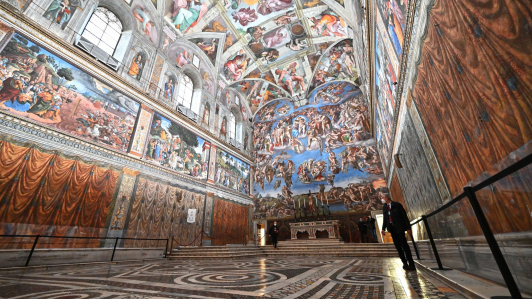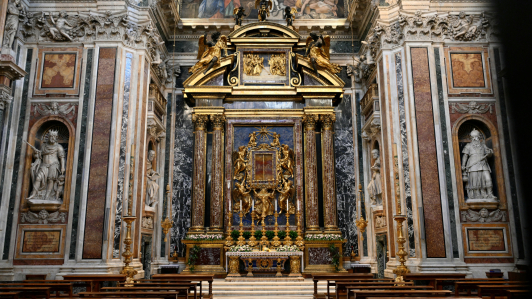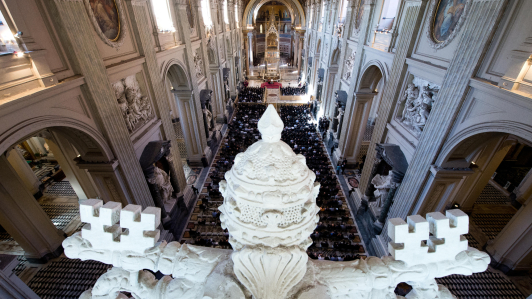The Conclave: A Historical Process for Electing the Next Pope
The upcoming conclave, which will select the successor to Pope Francis, adheres strictly to a meticulously crafted protocol developed over centuries in historically significant locations.
Main Locations Involved
St. Peter’s Basilica
This basilica, the largest in the world at 2.3 hectares, serves as the gathering place for cardinals to hold mass, initiating the papal selection process. Following the service, electors proceed in procession to the Sistine Chapel, singing “Veni Creator.”
The conclave officially concludes at St. Peter’s Basilica with the proclamation of the new pope (“Habemus papam!”) from the temple’s logia.
Designed by architects such as Bramante, Michelangelo, and Bernini between 1506 and 1626, St. Peter’s Basilica is a testament to architectural grandeur.
The Sistine Chapel
Built between 1477 and 1480, the Sistine Chapel lies on the right side of St. Peter’s Basilica, within the Apostolic Palace grounds. Commissioned by Pope Sixtus IV, it reportedly matches the dimensions of King Solomon’s legendary temple (40.5 meters long, 13.2 meters wide, and 20.7 meters high).

Foto: AFP
Famous for its frescoes by Perugino, Botticelli, and their students, the chapel’s crown jewel is Michelangelo’s ceiling and his “Last Judgment” fresco behind the altar.
During the conclave, cardinals sit on cherry wood chairs with engraved names in front of beige and burgundy-colored tables. A behind-the-scenes urn, adorned with two lamb figures, holds the voting slips. Two stoves are present: one for burning ballots and notes, the other for signaling voting results using chemical reactions. Black smoke indicates no agreement, while white smoke signals a new pope’s election.
Sala delle Lacrime (Chamber of Tears)
Located at the back of the Sistine Chapel, this 9-square meter room is inaccessible to the public. Newly elected popes enter here with the Cardinal Camerlengo and liturgical ceremonial officers to traditionally weep at the enormity of their task and don their first white cassock, symbolizing their worldly introduction.
Capella Paolina

Capilla Paulina. Foto: AFP
Built in 1537 for Pope Paul III by Antonio da Sangallo the Younger, this chapel is near the Sistine Chapel and St. Peter’s Basilica, where new popes pray briefly and privately before their first public appearance.
Residenza di Santa Marta
Cardinal electors stay at the Residenza di Santa Marta, built during Juan Pablo II’s pontificate behind St. Peter’s Basilica. Previously, cardinals stayed in cramped and makeshift rooms within the Apostolic Palace.
This residence, including a chapel, offers each cardinal a room with hotel-like amenities (meals and laundry services).

Vista general de la Casa de Santa Marta, un edificio adyacente a la Basílica de San Pedro en la Ciudad del Vaticano.
Rooms typically contain a single bed with a crucifix, many being suites with adjacent rooms equipped with desks and a single-line internal phone.
Restrictions
A fundamental rule during the conclave is the cardinals’ vow to maintain secrecy, facing excommunication for breaches. External contact via phones, internet, or newspapers is strictly prohibited, except in rare cases.
All cardinal locations are equipped with interference devices to prevent phone and tablet usage. Cardinals walking from Santa Marta Residence to the Sistine Chapel encounter pedestrian and vehicle restrictions to avoid contact.
All conclave personnel, including drivers, cooks, receptionists, cleaners, nurses, and doctors, also pledge silence in a solemn ceremony.






